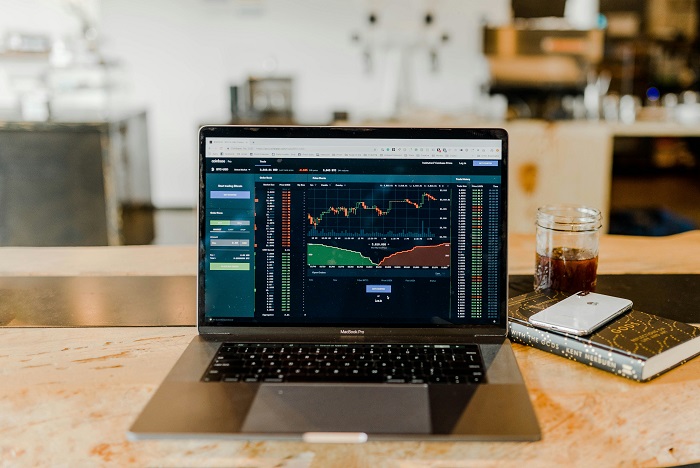When engaging in trading — whether it involves Forex, stocks, digital assets, or CFDs — brokerage clients encounter a multitude of opportunities to open and close trades, contingent on the ever-changing market conditions. Key features and benefits of TickTrader, an advanced trading platform developed by Soft-FX, include the versatility and sophistication of order types available to traders. The term ‘order’ essentially refers to the method by which traders enter or exit a trade. Over time, as trading platforms have evolved, brokerages have introduced increasingly advanced order types to meet the needs of discerning clients looking to implement complex market strategies. The variety of order types offered by a platform significantly influences the degree of freedom traders enjoy and, consequently, the overall appeal of the brokerage service.
In this article, we will delve into both basic and advanced trading or stock order types that are supported by TickTrader, highlighting their practical applications and strategic benefits.
Market Order
A market order, commonly known as a Buy or Sell order, is one of the simplest forms of trading instructions. It involves buying or selling a financial instrument at the best available current price. In practice, Buy orders are executed at the ASK price, while Sell orders are executed at the BID price.
Example: Consider a Forex trader who wishes to trade the AUD/USD currency pair. Suppose the BID price for this pair is 0.7601 and the ASK price is 0.7603. If the trader decides to buy AUD/USD, they would enter at the ASK price of 0.7603. Conversely, the trader would sell AUD/USD at the current BID price of 0.7601.
A market order can be likened to making a purchase on platforms like Amazon or eBay, where instead of receiving goods, the customer acquires a certain amount of currency.
When to Use: Market orders are generally not the preferred choice among seasoned investors due to the potential for slippage—the risk that the last-traded price may differ from the price at which the order is executed. Market orders are typically utilized when there is a sudden market movement and there is an urgent need to buy or sell an asset at the prevailing market price.
Pending Order
A pending order is an instruction to buy or sell a financial instrument under predefined conditions in the future. Unlike market orders, pending orders are placed with execution prices that can be either higher than the current ASK price for Buy orders or lower than the current BID price for Sell orders.
Pending orders can be categorized into several subtypes:
Limit Order
Buy Limit Order: A Limit order ensures that a Buy Limit order is executed at or below the specified price, and a Sell Limit order at or above the specified price. This order type allows traders to enter the market at a desired price point.
Stop Order
Buy Stop Order: A Stop order is set above the current price for Buy positions and below the current price for Sell positions. When the market reaches the specified Stop price, the order is activated and executed at the current market price. However, the actual execution price may differ from the set Stop price due to market fluctuations.
Stop Limit Order
Buy Stop Limit Order: A Stop Limit order merges the characteristics of Stop and Limit orders. Traders specify two prices: the Stop price and the Limit price. Once the Stop price is reached, a new Limit order is triggered and executed at or better than the Limit price.
When to Use: Pending orders are advantageous for traders who cannot continuously monitor market movements. These orders help alleviate the psychological pressure of trading and are particularly useful for both novice and experienced investors. The key to effectively using pending orders lies in accurately identifying entry and exit prices.
Execution Types
The way orders are executed can vary, adding another layer of complexity to trading strategies. Different execution conditions cater to various strategic needs:
Immediate Or Cancel (IOC)
An Immediate or Cancel order requires immediate execution of all or part of the order. Any unfilled portion is canceled if it cannot be executed right away.
Example: A trader places a Sell Limit order for 2 lots of EUR/USD. If only 1.25 lots are executed at the specified price, the remaining 0.75 lots are automatically canceled.
One Cancels the Other (OCO)
OCO orders link two conditional orders such that the execution of one cancels the other. This is useful for traders looking to manage risk and take advantage of market movements without manual intervention.
Example: With EUR/USD priced at 1.1800, a trader places a BUY order at 1.9025 and a SELL order at 1.1775. If the price hits 1.9025, the BUY order is executed and the SELL order is canceled.
When to Use: These execution types are not essential for every trader but are valuable for those looking to control risk and optimize their entry into the market. It is crucial that execution conditions align with the trader’s overall strategy.
Hidden Order
Hidden orders, while not a distinct order type, offer an essential feature that allows traders to conceal their order volume in the Depth of Market. This can be beneficial in preventing other market participants from seeing large trades, thereby avoiding potential market impact.
Example: A trader places an order for one lot (100,000 units) but sets only 10,000 units as visible. The Depth of Market will then show ten orders of 10,000 units each, disguising the total volume.
When to Use: The hidden order feature is ideal for traders who prefer not to disclose their trading volume, thus ensuring a smoother trading process.
Conclusion
Having an extensive list of order types is critical for any trading platform to attract a wide range of traders, from beginners to seasoned professionals. It is imperative for clients to understand these order types thoroughly and how they align with their trading style and emotional profile before employing complex trading strategies. The right combination of order types and execution methods can significantly enhance a trader’s ability to navigate the markets effectively.




